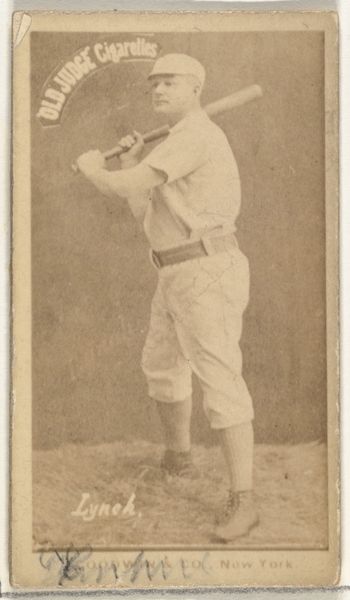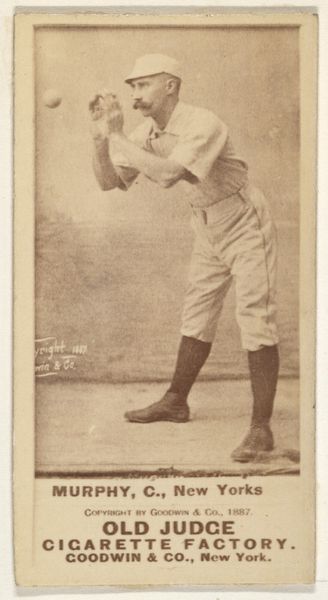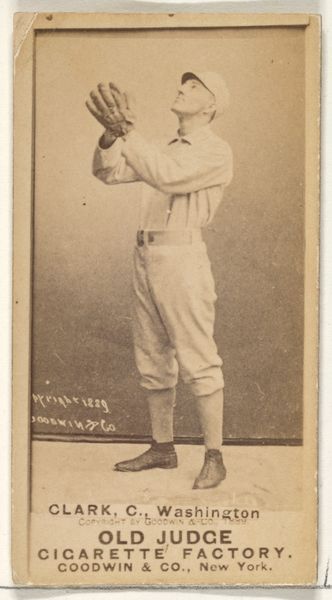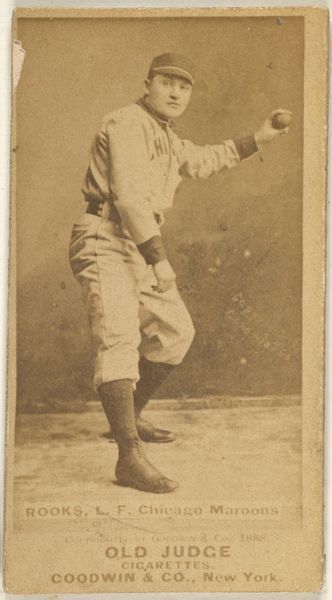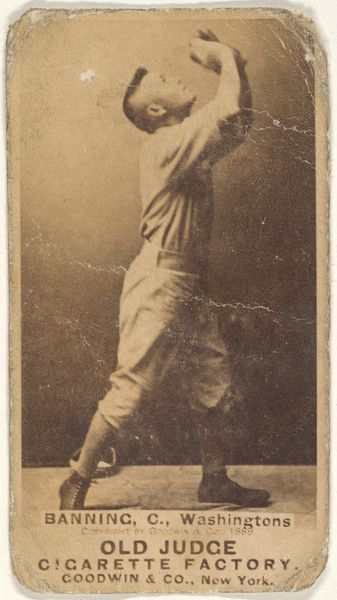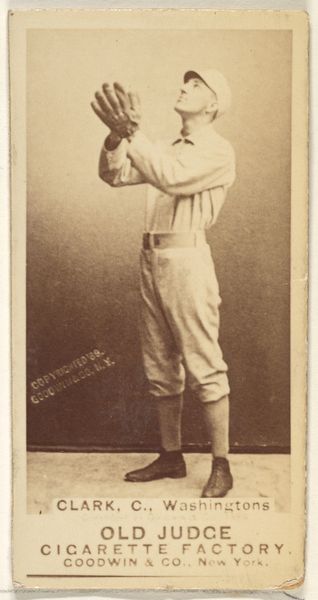
John H. "Jack" Lynch, New York Metropolitans, from the Old Judge series (N172) for Old Judge Cigarettes 1887 - 1890
0:00
0:00
drawing, print, photography
#
portrait
#
drawing
# print
#
baseball
#
photography
#
men
#
genre-painting
#
athlete
Dimensions: sheet: 2 11/16 x 1 3/8 in. (6.9 x 3.5 cm)
Copyright: Public Domain
Curator: Here we have a photographic print from between 1887 and 1890, part of the "Old Judge" series by Goodwin & Company. It features John H. "Jack" Lynch, a player for the New York Metropolitans baseball team. The prints were originally included in packages of Old Judge Cigarettes. Editor: It's striking how such a mundane commercial item presents an individual in what feels like an heroic pose, ready to fling that baseball across a field. The sepia tones lend it a wistful quality. Curator: The use of these cards went beyond just promoting a product; it promoted a cultural phenomenon: the rise of professional baseball and celebrity culture. Notice how the printing company, Goodwin & Co., placed their name prominently? It reflects the interplay of commercial and social forces shaping popular culture at the time. Editor: I see the romanticized version of a sport—something celebrated without acknowledging the class and race issues inherent in professional sports, even back then. Who got access, and whose stories get told, really matters. This image really captures an idealistic notion of athletic success but hides any potential struggles behind the sport. Curator: Exactly. While we see a clean image of an athlete, the historical context pushes us to investigate the industrial machine that enabled his rise, from production of the photo itself to the manufacture of the cigarettes. We tend to elevate singular athletic achievements, overlooking the broader social circumstances behind them. Editor: The legacy of using figures—especially athletic figures— to push products really carries on. This almost feels like a rough draft, and there’s value in looking at images like this to remember where many contemporary cultural trends have origins. It forces you to remember context and subtexts. Curator: Precisely; from sports figures to film stars, this photo invites a conversation around art, sport, advertising, and the construction of celebrity in modern culture. It has this unassuming facade, but it represents something far larger. Editor: The quiet melancholy, combined with the implications of early commercialism makes for quite an impactful reflection on culture and context. There's far more there than one might assume.
Comments
No comments
Be the first to comment and join the conversation on the ultimate creative platform.
